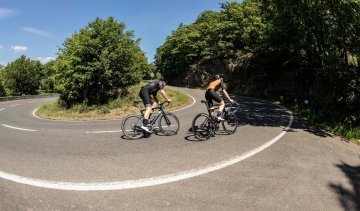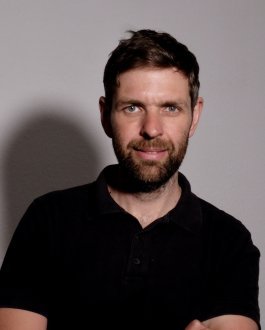
Shimano, Campagnolo or SRAM? Shifters & Deraill...
Whether you’re a sprinter or a mountain enthusiast, a nerd for classics or a fan of light materials, our tips will guide you to the right road bike system.
Smart training: all about power measurement, tricks from the pros and taking it easy on the first climb.
The golden rule for every climb and every race: Don't jump the gun and take it slow! Right... Because in the eagerness of the fight most cyclists rush into the mountains as if there were no tomorrow. And seeing all this through the eyes of a trainer, the "tomorrow" often doesn't really exist. This is because the drop in power due to excessive initial speed is enormous. And the chances for a new best time or a good placement drop almost as fast as the muscles acidify and their performance decrease.
What to do? Just slow things down? Yes and no. After all, how can recreational athletes know how slow or how fast is optimal? One person who can answer this question is Björn Kafka. He used to be a competitive athlete himself, then a journalist and now works with his company waytowin as a training expert, especially in professional cycling. On the subject of load control, Kafka says very clearly: "For me, power meters are among the decisive tools for load control." The reason he gives is: "Power meters are like dumbbells in strength training: twelve kilos is twelve kilos and 200 watts is 200 watts" By measuring the muscle forces acting on the drivetrain - in practice this is done by measuring the material twisting in the pedal axle, on the spider of the crank or on the rear wheel hub - athletes or coaches immediately know what the output is. Technology for professionals? On the contrary: "What works for the professional also works for the leisure (racing) rider, because: cells are cells." Björn works controlling training and the load in competition completely based on numbers.

Björn Kafka, coach and training expert at waytowin
"A power meter is an outdoor laboratory", Björn classifies the measuring instruments accordingly. "Training can be analysed much, much more precisely with it. Especially in the correlation of power, i.e. the propulsive force generated by the muscle, and heart rate." When the detective work of a trainer begins, the combination of power meter and pulse measurement is the basis for the analysis, where time can still be saved, says Björn. But for that you either have to know a lot about yourself or have a trainer who can interpret that.
But even for laymen: "Training control works much better with the power meter than with the heart rate monitor" Heart rate as a parameter alone provides only limited reliable data. The change in heart rate is nothing more than a reaction of the body to stress, says the expert. And the list of things that the body feels like stress is long... The weather, daily form, even nutrition have influence on pulse. This measurement is too imprecise to control the load in training and/or competition only. "There are sometimes distinct individual differences as to when a cyclist or at what heart rate he or she can perform optimally," explains Björn.
The 'optimal' is of course a question of ambition - and whether you want to be riding optimally at all. But let's be honest: On the bike you (almost) always want to ride faster, further or higher. It's the rush of speed on a Road bike. Or the fascination of another go on the trail.
And how do you approach this in practice? "In the beginning, just ride a power meter. In order to get a feeling for the numbers, the legs performance in different situations and especially after how much time", is Björn's tip. "When I start at 200 watts, it doesn't feel like anything. But after two, two and a half hours I notice: 'Oops, that's exhausting!'". In the peloton of a Tour de France or a Transalp Challenge, the professionals make use of exactly this information: measured by a power meter, the riders use exactly the power they can over a long time without losing it. "If I know that my ideal continuous output, we call it threshold output, is 350 watts, for example, then I go up the mountain with 350 watts," the training expert explains the procedure. In this way it could be ensured that the increase could be achieved or that it could be managed within a certain period of time.
In order to find out this value of the threshold performance as a recreational athlete, there are basically three possibilities. First: By observing one's own performance data over a longer period of time. Thus one finds out the wattage at which one does not collapse at the end, however, very roughly and at most approximately. Second: Comprehensive performance diagnostics, but this is sometimes costly and the number of institutions that perform such diagnostics is clear. Third: Via test rides and a classic FTP test over 20 minutes. Björn: "I am a friend of various test rides - over four minutes and 20 minutes, possibly even 60". From this you can calculate the average performance (athlete or coach) with the help of given formulas and with this number in mind you can tackle the next ride. Heading straight to a trainer isn’t always necessary: The head units of various systems, i.e. the handlebar displays, offer various modes for carrying out a status determination by means of a test. Especially in connection with online training platforms à la Zwift & Co. the threshold performance can be determined and controlled training can be carried out afterwards.
"The great thing, generally speaking, is that I can leave the subjective realm and have a concrete number guide me," concludes Björn. "With a power meter, I simply know in which performance range I have to move in in order to achieve the desired training progress. Or simply to get an achievement by coping with difficult climbs or cracking certain times."